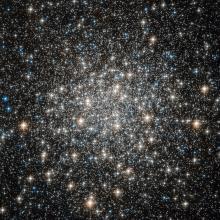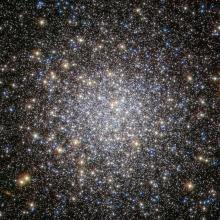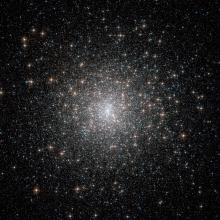Listen to today's episode of StarDate on the web the same day it airs in high-quality streaming audio without any extra ads or announcements. Choose a $8 one-month pass, or listen every day for a year for just $30.
You are here
Messier 71
Objects in the night sky aren’t always what they seem. Take Messier 71, a star cluster in Sagitta, the arrow. Originally, it was classified as an open cluster. In recent decades, though, it’s been reclassified as a globular cluster.
Both types of clusters are big groups of stars that were born together, from the same cloud of gas and dust. But that’s where the similarities end.
Most globular clusters contain a hundred thousand stars or more. The stars clump together in a tight ball. The clusters move well beyond the galaxy’s wide, flat disk. And their stars are among the oldest in the entire Milky Way — typically 10 billion years or older.
Open clusters, on the other hand, generally contain a few hundred to a few thousand stars, they’re concentrated in the disk, and they tend to be young. The combined gravity of their stars isn’t enough to hold a cluster together, so most open clusters vanish within a couple of billion years.
M71 has many of the traits of an open cluster: It’s in the galaxy’s disk, its stars are widely spread, and they’re younger than those in most globulars. But recent work has shown that M71 has more stars than first thought, the stars are older than expected, and the cluster travels far outside the galaxy’s disk. So M71 is a globular cluster — a not-too-big, not-too-tight family of ancient stars.
M71 is due east at nightfall, a third of the way up the sky. Through binoculars, it looks like a small, hazy patch of light.
Script by Damond Benningfield






